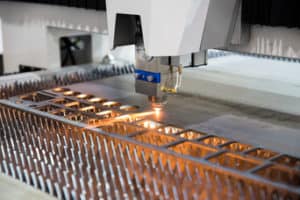Understanding the Cost-Benefit of Diverse Cutting Strategies
In the modern industrial landscape, the choice of machining techniques plays a key role in the efficiency and quality of manufacturing processes. Having a range of choices available, including conventional methods and modern technologies, businesses must navigate the challenges of expenses and performance to identify the best method for their particular requirements. Among the most popular techniques currently are laser and water jet cutting techniques, both of which offer distinct advantages and drawbacks.
Grasping the cost benefit analysis of these cutting methods is important for manufacturers looking to optimize their processes. Laser cutting is known for its accuracy and swiftness, making it ideal for detailed designs and thin materials. On the other hand, waterjet cutting is valued for its versatility and ability to process thicker materials without inducing heat-affected zones. By evaluating these techniques in detail, manufacturers can make informed decisions that correspond with their manufacturing goals while maintaining financial constraints.
Overview of Cutting Edge Techniques
Manufacturing cutting methods play a crucial role in manufacturing by shaping and processing materials into precise forms required for multiple uses. Among the most common methods are laser slicing and waterjet cutting, each offering special advantages and drawbacks. Understanding these techniques is important for companies looking to optimize production efficiency, lower costs, and maintain quality criteria in their output.
Laser slicing utilizes intense light to slice through materials, making it perfect for cutting metal, plastic, and textiles with high precision and speed. The method is particularly beneficial for detailed designs and delicate sheets, and it leaves clean edges, minimizing the need for extra finishing processes. However, the upfront investment in equipment and maintenance can be significant, impacting the overall financial analysis for companies.
In opposition, waterjet cutting employs intense water mixed with grinding materials to cut through a wide range of substances, including stone, glass, and heavy metals. This technique is known for its ability to cut intricate shapes without producing heat damage zones, thus maintaining material integrity. While the operational costs may vary, water jet cutting is often more flexible than laser cutting, making it appropriate for diverse manufacturing environments and applications.

Cost Assessment of Lasing Cutting
Laser cutting has transformed into a popular method in industrial manufacturing due to its accuracy and effectiveness. The first investment in laser cutting technology can be substantial. Equipment expenses can range from thousands of thousands to many hundred of thousands, according to the system's features, power, and brand. However, laser and waterjet cutting service -term operational costs commonly show significant savings. The quickness and accuracy of lasing cutting reduce material waste, which can significantly diminish overall production outlays.
In besides equipment acquisition, maintenance and operational costs play a key role in the cost assessment of laser cutting. Regular maintenance is necessary to keep laser systems running optimally, and even though maintenance costs can accumulate, they are generally reduced than those associated with older cutting methods. Moreover, laser cutting machines have lesser energy draw rates compared to processes like plasma cutting, which can contribute to ongoing savings as production increases.
Finally, the labor cost associated with lasing cutting is often lower than with standard cutting methods. Modern laser systems require fewer manual oversight, allowing skilled operators to manage multiple machines at once. This productivity means businesses can cut labor expenses while maintaining high levels of productivity. When evaluating the overall cost-benefit of lasing cutting, it's clear that the investment pays off in terms of accuracy, efficiency, and sustainable operational savings.
Expense Evaluation of Water-jet Machining
Water jet cutting is known for its precision and flexibility, making it an attractive option for numerous industrial applications. However, the costs associated with this cutting technique can vary significantly based on several factors. Initial installation expenses include the purchase or leasing of a waterjet cutting machine, which can be considerable. In furthermore to the equipment, ongoing expenses such as maintenance, liquid and abrasive materials, and utilities must be considered. These factors contribute to the overall financial investment for businesses looking to integrate water jet cutting into their processes.
Running costs typically are based on the material being cut and the complexity of the pattern. Waterjet cutting is particularly suitable for hard materials like steel, crystal, and rock, yet the expense of abrasives and the wear on the working tool can add up. However, water-jet cutting is often quicker than conventional methods, which can counterbalance some of these operational costs. Businesses that require detailed patterns or need to minimize waste may find that the benefits of water-jet cutting justify the investment, particularly in a challenging market where efficiency is essential.
When evaluating the value of waterjet cutting, it is important to consider not only the direct costs but also the long-term benefits. The capability to cut a broad range of materials with high precision can lead to better quality goods and reduced waste rates. In furthermore, water jet cutting leaves no heat-affected zone, minimizing the risk of material distortion and reducing the need for additional processes. Therefore, while the upfront expenses may be significant, the overall value derived from enhanced manufacturing processes and item quality can deliver a strong return on cost.